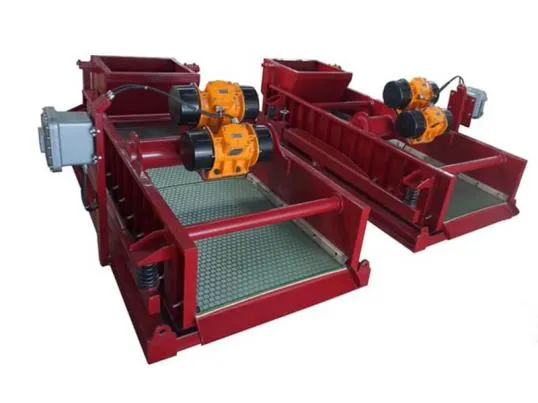- Industrial zone, South of Anping Town, Hengshui, Hebei, China.
- sales@hfpetromesh.com
- +86-18931809706
 Afrikaans
Afrikaans  Albanian
Albanian  Amharic
Amharic  Arabic
Arabic  Armenian
Armenian  Azerbaijani
Azerbaijani  Basque
Basque  Belarusian
Belarusian  Bengali
Bengali  Bosnian
Bosnian  Bulgarian
Bulgarian  Catalan
Catalan  Cebuano
Cebuano  Corsican
Corsican  Croatian
Croatian  Czech
Czech  Danish
Danish  Dutch
Dutch  English
English  Esperanto
Esperanto  Estonian
Estonian  Finnish
Finnish  French
French  Frisian
Frisian  Galician
Galician  Georgian
Georgian  German
German  Greek
Greek  Gujarati
Gujarati  Haitian Creole
Haitian Creole  hausa
hausa  hawaiian
hawaiian  Hebrew
Hebrew  Hindi
Hindi  Miao
Miao  Hungarian
Hungarian  Icelandic
Icelandic  igbo
igbo  Indonesian
Indonesian  irish
irish  Italian
Italian  Japanese
Japanese  Javanese
Javanese  Kannada
Kannada  kazakh
kazakh  Khmer
Khmer  Rwandese
Rwandese  Korean
Korean  Kurdish
Kurdish  Kyrgyz
Kyrgyz  Lao
Lao  Latin
Latin  Latvian
Latvian  Lithuanian
Lithuanian  Luxembourgish
Luxembourgish  Macedonian
Macedonian  Malgashi
Malgashi  Malay
Malay  Malayalam
Malayalam  Maltese
Maltese  Maori
Maori  Marathi
Marathi  Mongolian
Mongolian  Myanmar
Myanmar  Nepali
Nepali  Norwegian
Norwegian  Norwegian
Norwegian  Occitan
Occitan  Pashto
Pashto  Persian
Persian  Polish
Polish  Portuguese
Portuguese  Punjabi
Punjabi  Romanian
Romanian  Russian
Russian  Samoan
Samoan  Scottish Gaelic
Scottish Gaelic  Serbian
Serbian  Sesotho
Sesotho  Shona
Shona  Sindhi
Sindhi  Sinhala
Sinhala  Slovak
Slovak  Slovenian
Slovenian  Somali
Somali  Spanish
Spanish  Sundanese
Sundanese  Swahili
Swahili  Swedish
Swedish  Tagalog
Tagalog  Tajik
Tajik  Tamil
Tamil  Tatar
Tatar  Telugu
Telugu  Thai
Thai  Turkish
Turkish  Turkmen
Turkmen  Ukrainian
Ukrainian  Urdu
Urdu  Uighur
Uighur  Uzbek
Uzbek  Vietnamese
Vietnamese  Welsh
Welsh  Bantu
Bantu  Yiddish
Yiddish  Yoruba
Yoruba  Zulu
Zulu
- Afrikaans
- Albanian
- Amharic
- Arabic
- Armenian
- Azerbaijani
- Basque
- Belarusian
- Bengali
- Bosnian
- Bulgarian
- Catalan
- Cebuano
- Corsican
- Croatian
- Czech
- Danish
- Dutch
- English
- Esperanto
- Estonian
- Finnish
- French
- Frisian
- Galician
- Georgian
- German
- Greek
- Gujarati
- Haitian Creole
- hausa
- hawaiian
- Hebrew
- Hindi
- Miao
- Hungarian
- Icelandic
- igbo
- Indonesian
- irish
- Italian
- Japanese
- Javanese
- Kannada
- kazakh
- Khmer
- Rwandese
- Korean
- Kurdish
- Kyrgyz
- Lao
- Latin
- Latvian
- Lithuanian
- Luxembourgish
- Macedonian
- Malgashi
- Malay
- Malayalam
- Maltese
- Maori
- Marathi
- Mongolian
- Myanmar
- Nepali
- Norwegian
- Norwegian
- Occitan
- Pashto
- Persian
- Polish
- Portuguese
- Punjabi
- Romanian
- Russian
- Samoan
- Scottish Gaelic
- Serbian
- Sesotho
- Shona
- Sindhi
- Sinhala
- Slovak
- Slovenian
- Somali
- Spanish
- Sundanese
- Swahili
- Swedish
- Tagalog
- Tajik
- Tamil
- Tatar
- Telugu
- Thai
- Turkish
- Turkmen
- Ukrainian
- Urdu
- Uighur
- Uzbek
- Vietnamese
- Welsh
- Bantu
- Yiddish
- Yoruba
- Zulu
mezzanine grating
Understanding Mezzanine Grating A Comprehensive Overview
Mezzanine grating represents a pivotal advancement in optical technology, bridging the gap between traditional diffraction gratings and modern, high-precision optical devices. The concept of grating involves the intentional structuring of surfaces to manipulate light in various ways, either to split, filter, or modify its properties. The application of mezzanine grating plays a crucial role in areas such as spectroscopy, telecommunications, and laser technology.
At its core, mezzanine grating consists of a periodic arrangement of lines or grooves, which interact with light to produce specific diffraction patterns. Unlike standard gratings, mezzanine gratings are engineered with a layered approach that creates enhanced functionality. By employing multiple layers of materials, these gratings exhibit improved efficiency in light transmission and diffraction. This multilayer strategy allows for fine-tuning of the grating's properties, enabling the manipulation of different wavelengths of light with remarkable precision.
One of the primary advantages of mezzanine grating is its versatility in applications. For example, in spectroscopy, where the analysis of light spectra is essential, mezzanine gratings can be used to separate light into its constituent colors more effectively than traditional methods. This capability is crucial for identifying chemical compositions in various fields, including environmental monitoring and pharmaceuticals. Furthermore, the high-resolution capabilities of mezzanine gratings allow for the detection of subtle spectral features, enhancing the accuracy of scientific measurements.
mezzanine grating

In telecommunications, mezzanine gratings play a vital role in optical signal processing. They can be used in wavelength division multiplexing (WDM), a technology that increases the capacity of fiber-optic networks. By allowing different wavelengths of light to travel simultaneously through the same fiber, mezzanine grating significantly boosts data transmission rates. This is particularly important in the age of big data, where the demand for faster and more efficient communication systems is ever-increasing.
The manufacturing of mezzanine gratings has also seen significant advancements. Techniques such as electron-beam lithography and nanoimprinting have allowed for the creation of increasingly sophisticated grating designs. These methods enable the production of gratings with extremely dense line arrangements, enhancing their performance across a broader spectrum of wavelengths. Moreover, the development of novel materials, such as metamaterials, has opened new avenues for creating bespoke mezzanine gratings that tailor light manipulation for specific applications.
In conclusion, mezzanine grating represents a significant leap forward in the field of optics, combining the principles of traditional grating with modern advancements in materials and manufacturing techniques. Its applications span a diverse range of industries, including spectroscopy, telecommunications, and laser technology, making it an essential tool in contemporary scientific and technological endeavors. As research continues to evolve and innovate in this area, the potential for mezzanine grating to further influence the optics landscape remains vast and promising. The pursuit of enhanced accuracy, efficiency, and versatility in light manipulation will undoubtedly continue to drive interest and development in this fascinating field.
-
Welded Steel Bar Grating: The Strongest Choice for Industrial FlooringNewsMay.21,2025
-
Steel Grating for Sale: The Ultimate Anti-Slip SolutionNewsMay.21,2025
-
Steel Frame Shaker Screens: Unmatched Durability for Demanding OperationsNewsMay.21,2025
-
Shaker Screens: Your Ultimate Solution for Oil & Gas FiltrationNewsMay.21,2025
-
Press Locked Steel Grating: The Smarter Choice for Heavy-Duty FlooringNewsMay.21,2025
-
Helicopter Deck Safety Nets: Protect Your Crew and EquipmentNewsMay.21,2025